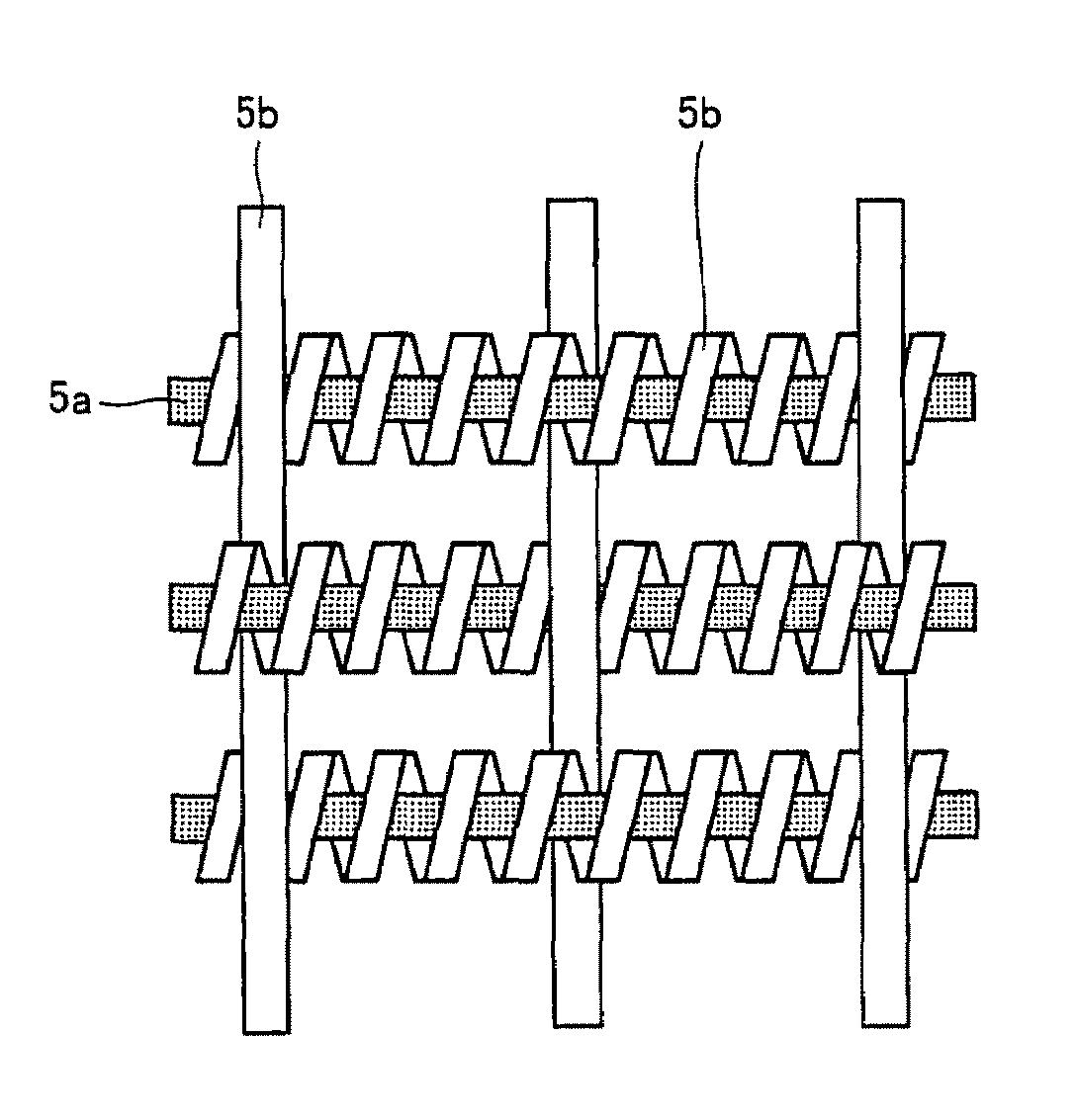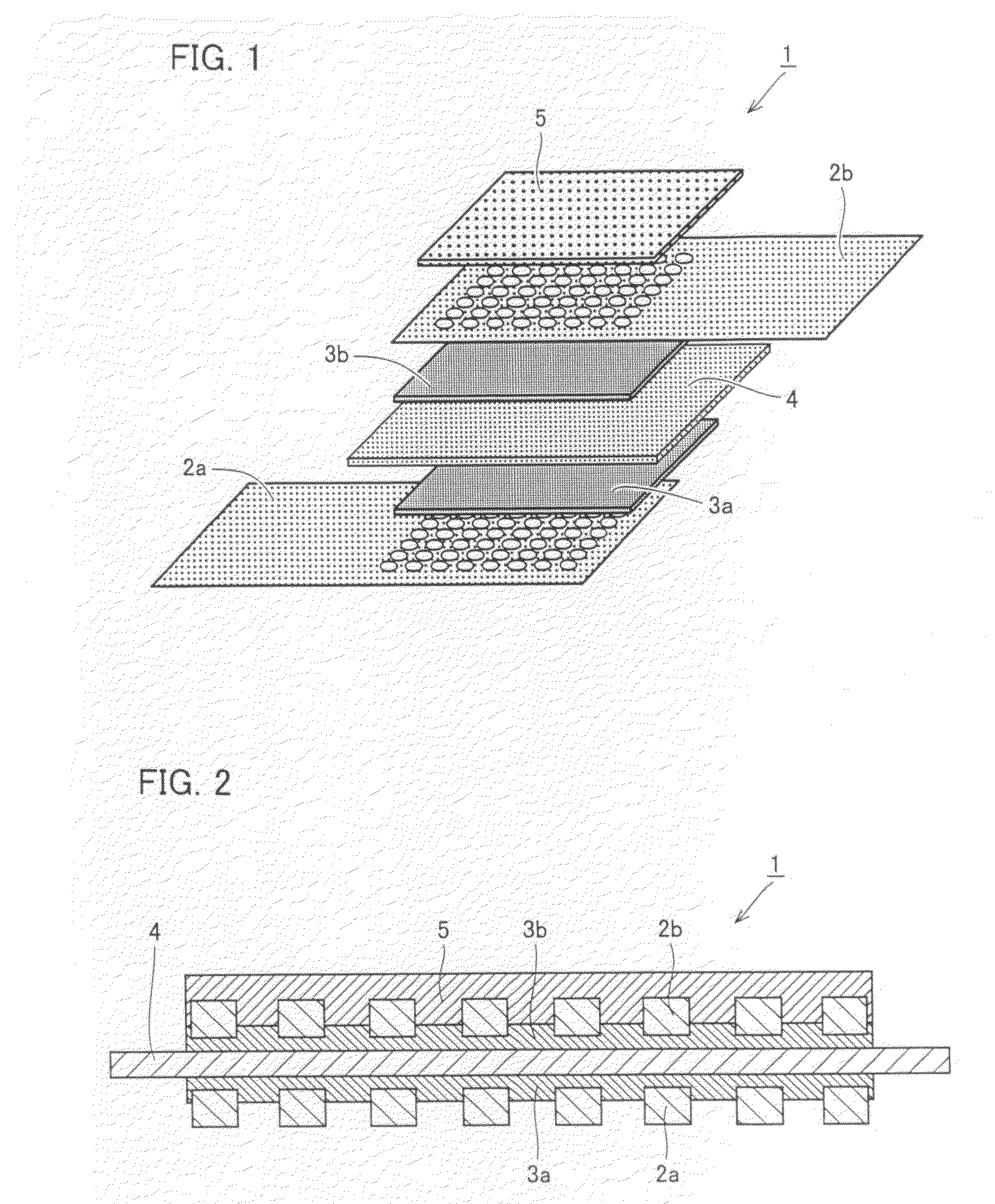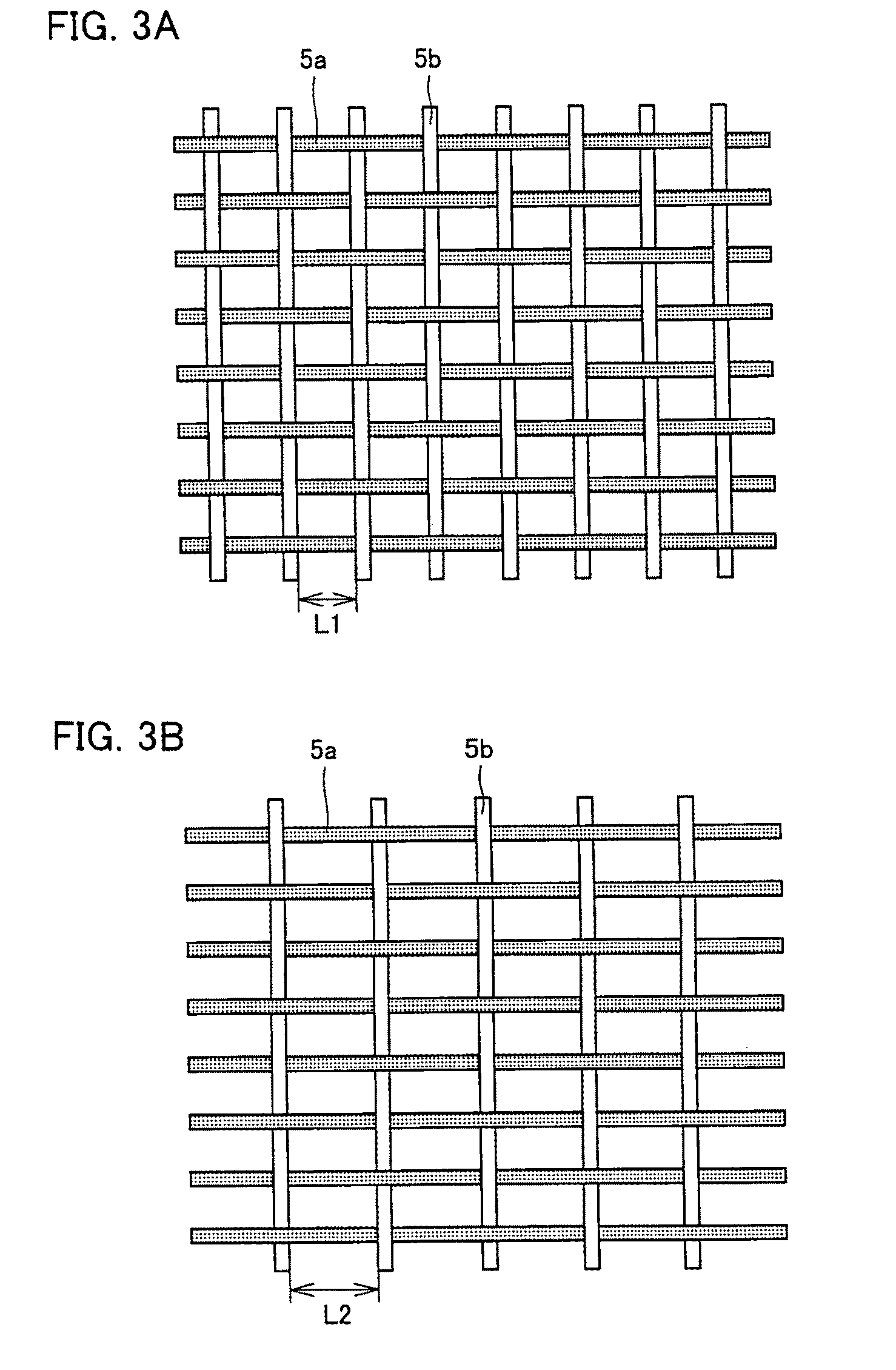Fuel cell containing a cathode diffusion layer having a fabric structure
a fuel cell and fabric structure technology, applied in the field of fuel cells, can solve the problems of deterioration in power generation performance, inadequate control of diffusion layer thickness, and satisfactorily responding, and achieve the effect of miniaturizing the fuel cell system and maintaining high power generation performan
- Summary
- Abstract
- Description
- Claims
- Application Information
AI Technical Summary
Benefits of technology
Problems solved by technology
Method used
Image
Examples
example 1
[0104]In the present example, a fuel cell having a structure similar to that of fuel cell 1 shown in FIG. 1 (fuel cell of Example 1) was produced. In the following, a producing method of the fuel cell of Example 1 will be described.
[0105]First, as electrolyte membrane 4, Nafion (trademark) 117 (available from Du Pont) of 40 mm wide×40 mm long, having a thickness of about 175 μm was prepared.
[0106]Next, catalyst-carrying carbon particles (TEC66E50 available from Tanaka Kikinzoku) consisting of Pt particles, Ru particles and carbon particles having a Pt carrying amount of 32.5% by mass and an Ru carrying amount of 16.9% by mass, an alcohol solution containing 20% by mass of Nafion (trademark) (available from Aldrich), isopropanol, and alumina balls were charged in a mass ratio of 0.5:1.5:1.6:100 into a Teflon (trademark) container, and mixed at 500 rpm for 50 minutes using a stirrer, to produce an anode catalyst paste.
[0107]On the other hand, a cathode catalyst paste was produced in a...
example 2
[0130]In the present Example, a fuel cell having a similar structure as fuel cell 1 having a structure shown in FIG. 5 (fuel cell of Example 2) was produced.
[0131]As anode diffusion layer 6, carbon paper (35BC available from SGL carbon) cut into a square shape of 23 mm wide×23 mm long was prepared. Then anode diffusion layer 6 formed of this carbon paper was overlaid at the same position with anode catalyst layer 3a from outside of gold mesh which was to be anode conductive layer 2a. Here, a microporous layer of anode diffusion layer 6 was overlaid so that it faces with the side that is in contact with anode conductive layer 2a.
[0132]Then, a stainless spacer of 600 μm thick was arranged, and hot press was executed to join anode diffusion layer 6 with anode conductive layer 2a.
[0133]Further, as fuel permeation layer 7, a hydrocarbon-based solid polymer membrane (available from TOKUYAMA) was prepared, and fuel permeation layer 7 was arranged outside anode diffusion layer 6 in such a...
PUM
| Property | Measurement | Unit |
|---|---|---|
| temperature | aaaaa | aaaaa |
| temperature | aaaaa | aaaaa |
| proton conductivity | aaaaa | aaaaa |
Abstract
Description
Claims
Application Information
 Login to View More
Login to View More - R&D
- Intellectual Property
- Life Sciences
- Materials
- Tech Scout
- Unparalleled Data Quality
- Higher Quality Content
- 60% Fewer Hallucinations
Browse by: Latest US Patents, China's latest patents, Technical Efficacy Thesaurus, Application Domain, Technology Topic, Popular Technical Reports.
© 2025 PatSnap. All rights reserved.Legal|Privacy policy|Modern Slavery Act Transparency Statement|Sitemap|About US| Contact US: help@patsnap.com



